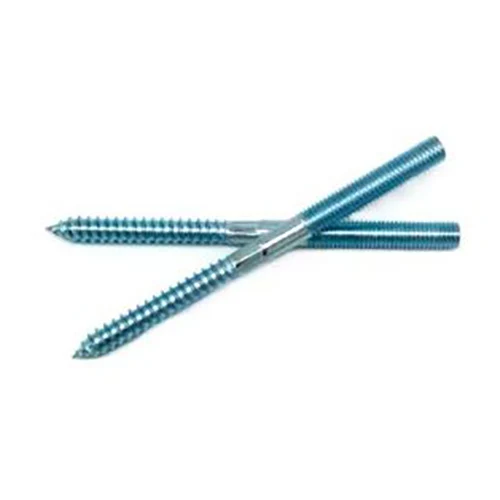What are differences between Hanger Bolt and eye bolt
2025-05-30
Hanger bolts and eye bolts are both types of fasteners, but they serve different purposes and have distinct structural and functional differences. Here's a breakdown of their key differences:
1. Structure and Design
Has wood screw threads on one end and machine threads on the other.
Does not have a head.
Designed to be partially driven into wood, with the machine thread side sticking out for a nut or metal attachment.
Eye Bolt
A bolt with a loop (eye) at one end.
Can have wood threads or machine threads along the shaft.
The eye is used to attach cables, ropes, or chains.
2. Main Purpose
Hanger Bolt
Used to fasten something to wood while allowing the exposed machine thread to accept a nut or another metal component.
Common in furniture assembly, electrical supports, and suspending items from wood.
Eye Bolt
Used for lifting, securing, or guiding loads.
The eye is a point for attachment, commonly used in rigging or to tie down items.

3. Installation Method
Hanger Bolt
Installed by screwing the wood thread side into wood (may require a pilot hole).
Needs a special driver or double nut method to turn it in.
Eye Bolt
Can be installed into wood (with wood threads) or used with nuts and washers (if machine-threaded).
Eye is used to pass rope or cable through it or attach hooks.
4. Load Handling
Hanger Bolt
Primarily designed for stationary support rather than load-bearing lifting.
Good for tensile forces (pulling along its axis), especially when anchored into wood.
Eye Bolt
Often used for lifting or anchoring, can handle dynamic and directional loads.
Special versions (e.g., shoulder eye bolts) are used in lifting and rigging applications.
If u are interested in our products, welcome to contact us. We will contact you in 24 hours


